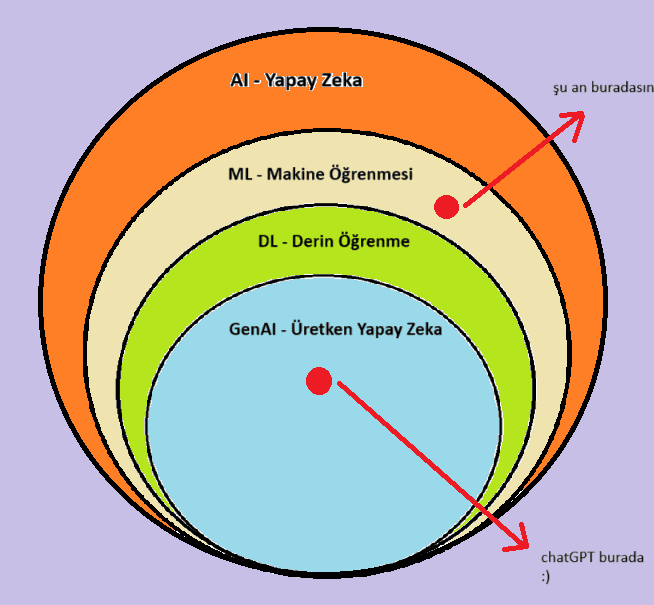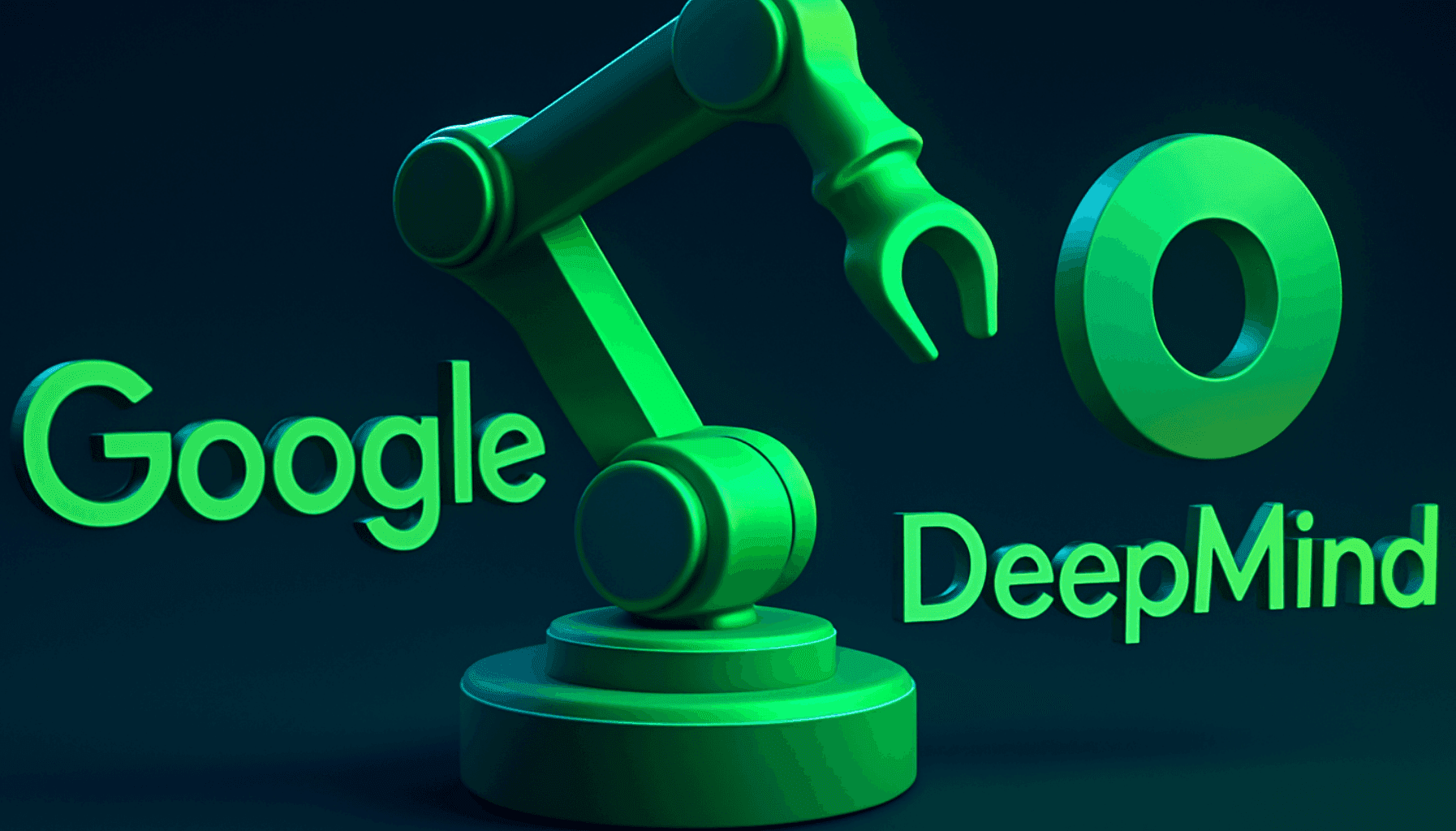
How Do Machines Learn (Or Do They Really Learn)?

Last year, a first occurred in the history of the Nobel Prize – in 2024, the Nobel Prize in Physics was awarded for the first time to something not directly related to physics. The Physics Prize was awarded to John Hopfield from Princeton University and Geoffrey Hinton from the University of Toronto for their work in the development of Machine Learning methods. To paraphrase Neil Armstrong’s famous words, I would like to repeat in the 21st century as a computer engineer: for us computer scientists, small steps in AI research are giant leaps.
In January 2023, OpenAI's ChatGPT made a rapid entrance into our lives, and artificial intelligence exploded into the spotlight. Generative AI surrounded us on all sides, and GitHub Copilot became our work companion overnight. In fact, the story dates back to the 1950s, and to summarize, Alan Turing asks a question, and things develop from there: "Can Machines Think?" His paper, published under the same name, would stir up the world and open the door to a research field that would ultimately lead to ChatGPT, a field teetering on the edge of all possibilities.
In this series of articles, we want to take you on a journey. It will be a road that is both technical and philosophical. The rhetorical question that brought us to this series is clear: how do machines learn, or do they really learn?
What is Machine Learning?
Leaving aside fancy definitions and mathematical formulas, machine learning, in its simplest form, is a machine's ability to make decisions by analyzing data, without direct guidance or a list of rules. Machine learning is based on the idea that a computer can understand patterns in data and improve its decision-making process through experience. I said it’s the simplest form, but it seems a bit complex, doesn't it?
A child analogy will be quite useful here: children learn by watching the actions of the adults around them and imitating them. Just like a child, in machine learning, the data is our source of observation.
Additionally, the most important thing that supports a child's learning is the drive to experiment. With the experiences gained through trial and error, they learn more about their environment. In machine learning, experience is provided by measurement metrics; with each iteration, the algorithm improves its decision-making process by taking these metrics into account.
What is Not Machine Learning?
Given the possibilities offered by generative AI, machine learning is often explained with different meanings. In order to gain a rational framework, it’s as important to talk about what machine learning is not as it is to talk about what it is.
Let’s try to answer the question of what machine learning is not.
Machine Learning Can't Solve Every Problem
Although it might seem like machine learning can do everything, it may not be very successful if there isn’t a clean data source to learn from (which is often the most problematic phase of many problems, finding and cleaning the data; we’ll discuss this in more detail in future articles). Similarly, when problems that could be solved with traditional programming approaches are tackled with machine learning just for the sake of using ML, unnecessarily complex models emerge. Additionally, the resources consumed—each AI model's environmental impact is undeniable and must not be overlooked, especially when considering its philosophical and ethical aspects—are another issue.
Machine Learning is Not a Magical Solution
Machine learning is a scientifically-based system that relies on data and mathematics. ML requires the right data and correct calculations. Misapplying data or collecting data incorrectly will lead to erroneous results.
Machine Learning is Not a Process Without Human Intervention
Human intervention is important in machine learning processes. Data preparation, model selection, hyperparameter tuning, and model evaluation all require human interaction. In other words, it is not an entirely automated process. The success of a machine learning model depends on humans collecting the right data, analyzing it, and making correct adjustments to the model.
Machine Learning Doesn’t Always Produce Correct Results
Although machine learning is based on learning from data, the model does not always give correct results. The accuracy of the model depends on the quality of the data used, the algorithms selected, and the training of the model. Sometimes, the model can make incorrect predictions or generalization errors. Therefore, the model needs to be constantly monitored and retrained when necessary.
These points could be expanded further, but I think the most important thing to remember about machine learning is this: a machine learning model is only as intelligent as the data it learns from and the person who trains it.
Machine Learning vs. Traditional Programming
When asked about the difference between machine learning and traditional programming, the first thing that comes to mind should be the rule sets in the traditional approach. Machine learning involves probabilistic approaches to situations, like games, whereas traditional programming uses more rigid, unchanging rules for mathematical operations.
Below is a detailed comparison of the two approaches.
| Traditional Programming | Machine Learning | |
| Definition | It works with rules and algorithms that the developer clearly defines. | A model that is trained with data and can make decisions through the learning process. |
| Learning Method | Operation with fixed rules and algorithms. | Learning from data, the model discovering patterns. |
| Flexibility and Adaptability | It is based on fixed, unchangeable rules. | It can constantly improve based on data. |
| Goal and Use | Suitable for specific, clear and predefined tasks. | Suitable for uncertain, predictive tasks. |
| Success Metric | Sticking to rules and algorithms. | Accuracy and generalization ability of the model. |
| Examples | Arithmetic calculations, file operations, data sorting. | Image recognition, voice commands, recommendation systems. |
Machine Learning in Real Life
We use machine learning in many aspects of our daily lives, whether knowingly or unknowingly. From healthcare to sports, computer games to climate change solutions, machine learning has successful applications across various fields. Let's take a general look at some of these applications.
Image Recognition
Machine learning, particularly deep learning, works effectively with visual data. Image recognition applications can analyze photos to identify objects, faces, landscapes, and add labels. For example, Google Lens can analyze a photo and provide information about objects, scan barcodes, and QR codes.
Natural Language Processing (NLP)
Voice response systems, chatbots… All your virtual assistants utilize the power of NLP. Google Translate uses NLP to translate texts between languages. Siri and Alexa process voice commands and natural language questions to provide the correct answers.
Recommendation Systems
Recommendation systems are some of the first things that come to mind when machine learning is mentioned. Every decision you make provides new data to the model. This data is often used to offer recommendations based on your past behavior. Netflix suggests movies and shows based on your viewing habits, Amazon offers product recommendations based on your purchase history, and Spotify suggests new songs and artists based on your music preferences.
Early Diagnosis in Healthcare
Machine learning is used to analyze medical data and detect diseases at early stages. Deep learning, for example, is used to identify abnormalities in images such as X-rays and MRIs for conditions like cancer and heart diseases.
Autonomous Driving Systems
Autonomous vehicles use machine learning to perceive their surroundings, analyze road conditions, and detect obstacles. Companies like Tesla with their Autopilot system and Waymo are developing autonomous driving technologies by using deep learning to interpret the vehicle's environment and drive safely.
Financial Applications and Fraud Detection
Machine learning is widely used in fraud detection and financial analysis. For credit card fraud detection, machine learning models examine shopping histories to identify abnormal transactions. Additionally, machine learning is applied in financial market analysis and stock price prediction.
Agriculture and Farm Management
Machine learning is used in agriculture to increase efficiency. For example, agricultural machinery can analyze soil conditions, weather data, and crop information to predict the best planting times and irrigation plans.
Climate Change Predictions and Modeling
Machine learning is used to model and predict the future effects of climate change. For example, climate change simulations can predict temperature increases, sea-level rise, and other climatic changes using models trained with past data. These predictions provide critical information for policymakers and environmental organizations.
Natural Disaster Predictions and Early Warning Systems
Machine learning is used to predict natural disasters, which are increasing due to climate change, and to develop early warning systems. For example, rainfall and soil moisture data can be analyzed to predict flood risks. Similarly, machine learning models can be used to detect drought conditions in advance.
Energy Efficiency and Renewable Energy Management
Machine learning can be used to predict energy consumption and the production capacity of renewable energy sources. For example, models can predict solar and wind energy generation based on weather data, improving the efficiency of energy grids.
Ecosystem and Biodiversity Monitoring
Machine learning can be used to track the impact of climate change on biodiversity. For example, satellite imagery data can be analyzed to monitor forest cover loss and assess forest health. Additionally, data on species migration and habitats can be analyzed to identify which species are at risk due to climate change.
The Future of Machine Learning
Considering the increase in user data from social media, advances in computers, and the rise of large language models, it’s clear that we are headed toward an exciting AI era. AI, machine learning, and deep learning continue to grow stronger every day, but unfortunately, with the excitement of progress, ethical concerns are sometimes overlooked. As pointed out by the technical experts at major tech companies, perhaps we are getting closer to artificial general intelligence with every passing day.
In the debates about the future of machine learning, where do you stand? Are you optimistic or pessimistic? Will AI really take our jobs? Do you have ethical concerns? Or do you see all of these developments as a bubble? Whatever your answers to these questions, machine learning is already a part of our lives and will continue to be so.
Lastly
In this article, we wanted to provide a general perspective on machine learning. As we mentioned at the beginning, machine learning is a field that can be explored from various angles and is right at our side. In the upcoming parts, we will start with simple approaches, gradually dive into the technical aspects, try small examples together, closely examine machine learning workflows, tools, and libraries, and also look at algorithms in detail. Along the way, we will also address the ethics, philosophy, and social impact of machine learning.

At the end of the first section, I want to leave you with a familiar diagram. We are currently at the red dot, and we are about to embark on a long journey through space-time. Many beginners feel fear and uncertainty when first entering the world of machine learning. To deal with such situations, it’s useful to remember the advice given in The Hitchhiker's Guide to the Galaxy: “Don’t Panic.”
This is the most important piece of advice in The Hitchhiker’s Guide to the Galaxy. It is written in large letters on the book cover, so it is considered quite important. Staying calm and breathing is essential for survival, no matter how frightening or strange the situation may seem.




